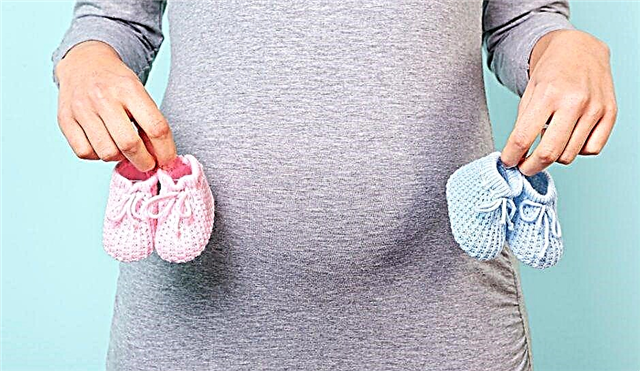
It so happened that Russian parents consider walkers and jumpers to be an excellent gift for a newborn. A new addition has just appeared in the family, and he is already given a walker along with a stroller and a crib. Indeed, these devices are very bright, amusing and eye-catching. In addition, many parents are confident that they will help their child to get up on their feet and walk on their own as soon as possible. Whether the gingerbread called "walkers" is so sweet, whether they will harm the development of the child, from what age you can use them, we will tell you in this material.
History of things
All over the world, walkers are commonly referred to as a narrow group of goods intended for the disabled and the elderly. Such devices appeared in the middle of the last century, and their role is still extremely important. They help people with disabilities to maintain an upright body position in space while standing and walking.
Baby walkers are essentially made for the same thing. They were first patented in Great Britain in 1953, but the popular love for the invention came much later, and the first walkers were put into mass production in 1970 in the United States of America.
Children's doctors in the USSR were categorically against the use of such devices for babies, and therefore in the country at the legislative level they decided to ban the manufacture and sale of walkers. In the 90s, the ban was questioned, and seeing how the babies of developed countries cheerfully dissect in walkers, they decided to start selling such products in our country.


Since then, walkers have become a common thing; you will not surprise anyone with their presence in the family in which the child grows up. But doctors are increasingly recalling the prohibitions of the Soviet era and argue that they were very reasonable and reasonable. The main argument of pediatricians is the unnaturalness of walkers for children.
If an adult, who previously walked and stood, cannot now take a single step due to an illness or injury, the adaptation is considered justified, because it helps to improve the quality of life of a person who is accustomed to an upright position.
Children, whom nature has given time for the skeleton to get stronger, and during this time they do not stand on their feet and do not make vertical movements, walkers, according to many pediatricians, are not needed. They are gross interference with the processes provided by nature. Parents can draw their own conclusion by weighing all the advantages and disadvantages of these devices.

Apply or not?
The advantages of a walker are obvious. They are helpful and enjoyable for young parents. Mom, having seated the child in the device, can devote a little time to herself, to do the accumulated household chores.
The kid will not go anywhere from the walker, if, of course, the parents secured him correctly with belts and made sure that there are no unnecessary objects on the floor that the walker wheel can "trip over". It is possible to roll over from a walker, but in practice this does not happen often.
The kid does not just move around the apartment in a walker, he is actively playing at this time, because modern models, unlike the first ones released back in the second half of the last century, have bright colors and all kinds of sorters, abacus, bells, buttons and other play devices.
In children's stores, walkers are classified as developmental goods. But you shouldn't believe it, because No one has yet been able to prove the benefits of walkers. Moreover, many pediatricians (and their number is steadily growing) believe that walkers are dangerous for a child.
To put a child in a walker, experts say, is to contradict nature, to disrupt the natural course of human development. He will definitely stand on his legs, but this should happen when the muscles, bones, joints, ligaments are fully ready for vertical load. The degree of readiness can be determined by one clear sign: the child began to rise on his own without the coercion and help of his parents.

Age restrictions
Device manufacturers and their sellers swear by oath that they can be used from 5-6 months. However, in matters of age, they are somewhat cunning, and this cunning can then cost dearly the baby's mom and dad. Experienced pediatricians recommend using a walker, if the parents insist on their use, not earlier than the child is 8-9 months old.
Putting a child in a walker earlier means increasing the load on immature bones and joints, on the spine at the very moment when the child's skeletal and muscular systems need careful treatment, reasonable loads for proper formation.
In addition, a child in a walker does not develop a sense of balance, this then significantly slows down the development of the skill of independent walking, and a baby who grew up in a walker learns with great difficulty to fall and group, because the illusion of constant safety is firmly embedded in his consciousness.


The opinion of Dr. Komarovsky
The famous pediatrician Yevgeny Komarovsky recommends that parents pay more attention to the natural development of the child. Before getting to his feet, the baby has to go a long way - learn to roll over, crawl, sit. It is this sequence of skills that guarantees the normal development of the spine, muscles, legs.
Parents' attempts to speed things up can put excessive stress on the spine and hip joints, knees and feet. As a result of this, the child will develop an incorrect posture, problems with the vertebrae and joints may arise, which can even bring the baby to disability in the future. Walkers, according to Komarovsky, like other devices for early verticalization, form an incorrect position of the feet, which is fraught with their deformation - valgus, varus, flat feet.
Evgeny Komarovsky recommends not to use a walker, and if it does, not earlier than from 9 months and no more than 15 minutes a day.
You will learn more about how many months from how many months you can put a child on a walker and whether it is worth doing it in the following video.



